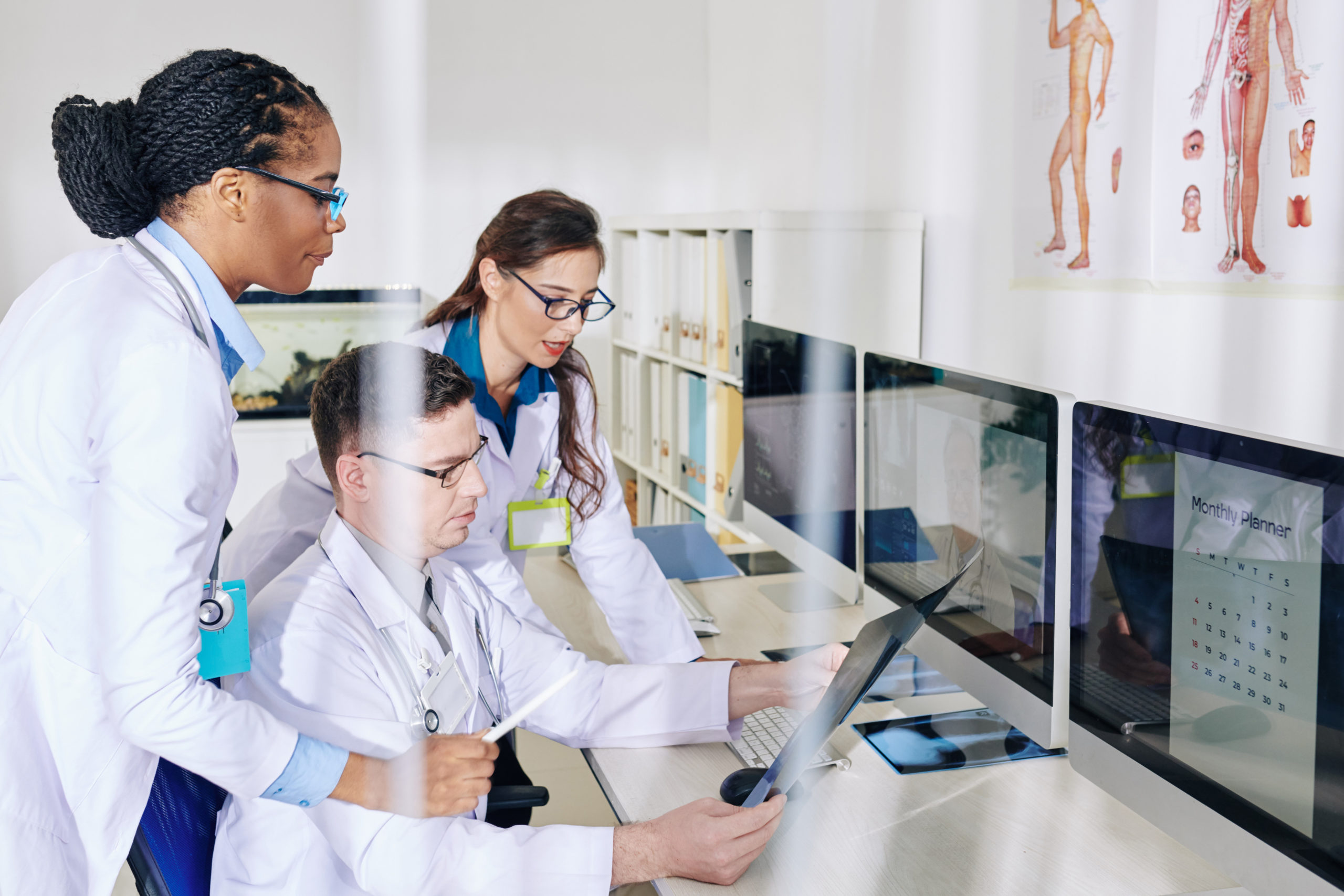Touro University of California College of Osteopathic Medicine was born in the 20th century and, to this day, excels at training osteopathic physicians for their field. While osteopathic physicians only account for 16 percent of doctors in the United States, their perspective and medical expertise are highly regarded.
In today’s article, we’ll cover:
- Programs Offered at Touro Medical School
- Cost of Attendance
- Touro Medical School Ranking
- Touro Medical School Class Statistics
- Touro Medical School Acceptance Rate
- Touro Medical School Secondary Application (including essays)
- Touro Medical School Interview
As you learn more about Touro Medical School, you’ll probably notice how much Touro values community involvement and healthcare exposure. If you’re looking to beef up your application, we invite you to consider our voluntary healthcare internships abroad. International Medical Aid takes pre-med students to countries in East Africa, South America and the Caribbean. In these settings, you’ll shadow healthcare professionals as they provide medical care to underserved populations. It’s the kind of experience that will help you decide if medicine is the right career for you and help make your application stand out.
Programs Offered at Touro Medical School
Touro University of California offers the following programs through the College of Osteopathic Medicine:
- Doctor of Osteopathic Medicine
- Doctor of Osteopathic Medicine / Master of Public Health
- Master of Science in Medical Health Sciences
Doctor of Osteopathic Medicine
Like most medical schools (whether allopathic or osteopathic), the Doctor of Osteopathic Medicine program is split into pre-clinical and clinical education. But before we dive into the curriculum, let’s look at the learning outcomes and philosophy that the college has laid out for all students.
Learning Outcomes:
- Osteopathic Principles and Practices
- Medical Knowledge
- Patient Care
- Interpersonal and Communication Skills
- Professionalism
- Practice-Based Learning and Improvement
- Systems-Based Practice
- Structural Competency
Philosophy:
- “The human body is a dynamic unit of function.”
- The human organism both regulates and heals itself.
- Anatomy and physiology are “reciprocally interrelated.”
- The musculoskeletal system doesn’t just provide support. It’s actively involved in diagnosing and treating diseases.
- Doctors should care about a patient’s overall health instead of focusing on a problem area.
With the learning outcomes and philosophy established, let’s look at the curriculum.
Year 1
- Osteopathic Principles and Practices I & II
- Osteopathic Doctoring I & II
- Fundamentals of Osteopathic Medicine
- Integrated Systems – Cardiology, Respiratory and Renal
Year 2
- Osteopathic Principles and Practicing III & IV
- Osteopathic Doctoring III
- Integrated Systems: Musculoskeletal / Neurology
- Integrated Systems: GI, Endocrinology, Reproductive, Dermatology
Year 3 – Clerkships
- Pediatrics (4 weeks)
- Obstetrics and Gynecology (4 weeks)
- Family Medicine (8 weeks)
- General Surgery (8 weeks)
- Internal Medicine (8 weeks)
- Psychiatry (4 weeks)
- Elective Clerkship (4 weeks)
- Clinical Distinction (8 weeks)
- Osteopathic Clinical Integration & Callback (Longitudinal course)
Year 4
- Obstetrics and Gynecology (2 weeks)
- Pediatrics (2 weeks)
- Primary Care (4 weeks)
- Critical Care (4 weeks)
- Osteopathic Neuro Musculoskeletal Medicine (2 weeks)
- Emergency Medicine (4 weeks)
- Elective Clerkships (22 weeks)
Here are the elective courses:
Elective Courses:
- Advanced Anatomy
- Art of Observation
- Global Health: Fundamentals
- Global Health: Health and Disease in the Developing World
- Global Health: Summer Internship
- Helping Babies Breathe: Newborn Stabilization in the Developing World
- Integrative Medicine: Clinical Cases
- Medical Nutrition: Foundations
- Palliative Care
- Pregnancy Partners
- Social Justice in Public Health
- Summer Clinical Preceptorship
- The Healer’s Art
- Wilderness Medicine: Mountain Medicine
Students must successfully complete all the program requirements and pass the COMLEX-USA exams before becoming Doctors of Osteopathic Medicine. After these requirements are met, students will be eligible to Match for residency.
Doctor of Osteopathic Medicine / Master of Public Health
For this dual degree, students must complete the DO curriculum along with 30 additional credits, which are as follows:
- Biostatistics
- Epidemiology
- Environmental Health Science
- Health Policy & Management
- Social & Behavioral Sciences
Students in the Community Action for Health Concentration must also take:
- Health Disparities & Community Organizing
- Health Education & Promotion
Students in the Global Health Concentration must take:
- Essentials of Global Health
- Emerging Health Threats
Students in the Global Health concentration will travel to different countries to fulfill course requirements. Countries include Bolivia, Cambodia, Ethiopia, Nepal and Uganda.
Students in the Health Equity & Criminal Justice Concentration must take:
- Criminal Justice & Public Health
- Criminal Justice Law & Advocacy
Finally, regardless of concentration, all students must take:
- CPH Prep Exam Course or
- MPH Capstone Course and
- Public Health Field Study
While many dual-degree programs require students to complete the MPH curriculum between their third and fourth years of medical school, Touro University of California requires students to complete the curriculum the summer before entering the College of Osteopathic Medicine. That, or students may add a fifth year to complete the curriculum.
Master of Science in Medical Health Sciences
It’s important to note that the Master of Science in Medical Health Sciences degree will earn you a master’s degree, but you won’t become a medical doctor. More or less, this is a post-baccalaureate program to help students prepare for the rigors of medical school.
Perhaps you decided to become a doctor after you earned your bachelor’s degree. You wouldn’t be prepared for medical school because you wouldn’t have taken all the prerequisite courses. Now is your chance. Or, perhaps, you want a master’s degree in Medical Health Sciences before you decide whether to become an osteopathic physician. Both are viable options.
Whatever your reason might be, these are the courses you’ll take:
- Anatomy
- Medical Biochemistry
- Molecular Cell Biology
- Neuroscience
- Introduction to Research
- Physiology I & II
- Immunology & Infectious Disease
- Pharmacology
- Research Internship
Those are the programs that Touro University of California offers to prospective students. Now, let’s look at how much it costs to attend Touro.
Cost of Attendance
It costs $408,217 to earn your Doctor of Osteopathic Medicine degree from Touro University of California. Here’s the breakdown:
- Tuition: $59,610 per year
- Student Health Center Fee: $300 per year
- Technology Fee: $150 per year
- Student Health Insurance Plan: $4,664 per year
- Books and Supplies:
– $4,256 for Year 1
– $4,120 for Year 2
– $528 for Years 3 & 4 - Computer Allowance: $2,066 for Year 1
- Estimated Cost of Living:
– $26,506 for Years 1 & 2
– $46,792 for Year 3
– $49,387 for Year 4
It’s expensive to attend Touro University of California College of Osteopathic Medicine. But don’t let the sticker shock keep you from applying. Financial aid is available. Scholarships, grants and loans can help you get through medical school.
The Master of Science in Health Science Studies degree costs $30,770 before the cost of living and other indirect costs. This amount covers all mandatory fees that you must pay Touro University.
More information on financial aid and the cost of attendance for different programs is available for prospective students.
Touro Medical School Ranking
So, where does Touro Medical School rank among the best medical schools in America? According to US News and World Report, Touro Medical School ranks in the top 123 medical schools for Research and Primary Care. Touro also ranks in the following categories:
#8 Most Graduates Practicing in Primary Care Fields
#73 Most Graduates Practicing in Rural Areas
#88 Most Graduates Practicing in Medically Underserved Areas
Class Statistics
The following are the statistics for the Class of 2024:
- Average Cumulative GPA: 3.5/4.0
- Average Science GPA: 3.4/4.0
- Average MCAT: 507
- Average Age: 24 (20 to 34 age range)
- In-State Students: 85 percent
- Out-of-State Students: 15 percent
- Total medical school enrollment: 1,032
- First-year matriculants: 270
- Total male: 459
- Total female: 572
Students from the following schools are attending Touro Medical School:
- UC Davis
- UC Los Angeles
- UC San Diego
- University of Southern California
- Boston University
- University of Maryland
- University of Michigan
- University of Washington
The Touro Medical School acceptance rate is five percent.
Touro Medical School Secondary Application (Including Sample Essays)
When applying to medical school, you’ll submit two applications: your primary and your secondary. We’ve covered both kinds of applications comprehensively.
For Touro Medical School, you’ll submit your primary application through the American Association of Colleges of Osteopathic Medicine Application Service. Also known as AACOMAS, this application goes to all the osteopathic medical schools to which you apply. It saves you from having to fill out the same information multiple times.
Touro Medical School screens all its applicants before sending out secondary applications. So, if you don’t receive an invitation to fill out the secondary application, then you’ve been declined based on your primary application.
If you receive the secondary application to fill out, then you’ll have some essays to write. These essays are in addition to your personal statement. Below are the questions you’ll be asked for the next admissions cycle and sample responses. If you need help writing your secondary essays, International Medical Aid is here to help. Through our med school admissions consulting services, we can help you brainstorm and outline your essays. We can also give you feedback on essays you’ve already written.
Question #1
Please tell us about your personal characteristics and life experiences, and how those characteristics and experiences would “contribute to your success at becoming an outstanding Osteopathic Physician.” Please share everything that will help us understand what sets you apart. You have 500 words.
Here’s an example:
Growing up, my mother taught me to be kind to everyone I encountered. This was hard for me to do because I was born with psoriasis, and not everyone was kind to me. I got a lot of mean comments during my elementary school years from kids who hadn’t been taught to be kind. Sure, I looked different. But I was still a person, and I deserved to be treated nicely.
Even though others were mean to me, I listened to my mother because I looked up to her. She had me when she was 17 years old. She refused to put me up for adoption because she loved me too much, so she dropped out of high school, later earned her GED and went on to become a secretary. She gave up most of her dreams for me, and not everyone was kind to her because of that. Kindness, care, compassion, respect and integrity are just a few of the character traits that my mother instilled in me. Those are character traits that I hope to instill in my future children. But before I become a mother, I want to become a doctor of osteopathic medicine.
My interest in medicine began when I was a sophomore in high school. I donated blood for the Red Cross at a local blood drive, and I learned how important blood donations are. Then, a few months later, we had a fire start in the kitchen at my high school.
One of the cooks was badly injured. I remember seeing her wheeled out on a stretcher. She was crying from the burn marks on her arms and chest. I remember seeing how tenderly the firefighters cared for her. It was a brief moment, but it was touching.
Finally, during my junior year, I went on a ride-along in an ambulance. From that experience, I went on to become an EMT. I knew I loved medicine and wanted to help people.
Throughout my entire life, and especially when I became interested in medicine, my psoriasis was always pointed out to me. I was used to the classic questions. “What’s wrong with your skin?” “Why don’t you cover your rash with makeup?” “Is it contagious?” But I wasn’t prepared for questions like, “Do you want to find a cure for yourself? Is that why you’re becoming a doctor?” “What if you need to scratch yourself while you’re with a patient?”
I suddenly didn’t know if I could follow my dreams all because I had itchy, flaky, rashes on my body. It wasn’t until I started talking about becoming a doctor that I was criticized and began to question my abilities. It was my mother who helped me through that challenging time. She shared with me some of the ugly things people had said to her when she was pregnant with me. She taught me how to work past what others said and focus on what really mattered to me. I knew I wanted to be a doctor, so I decided to follow my dreams.
Question #2
Please tell us about your experiences with osteopathic medicine. How have you been exposed to it? What is your understanding of it? You are welcome to go into detail on how you were introduced to osteopathic medicine, as well as its history, use in medicine today and anything else that you believe makes osteopathic medicine unique. How will these aspects of osteopathic medicine affect how you hope to practice medicine? You have 500 words.
Here’s an example:
My exposure to osteopathic medicine began very early on in my life since my father was an osteopathic physician, and I spent a lot of time in his office. My father opened his private practice when I was three years old. Everyone who came and went thought I was adorable. Many of the people who came into my father’s office were very sick patients who needed medical care.
Growing up in a doctor’s office gave me a clear understanding of what being a doctor meant. It wasn’t until I was in high school when I learned about the differences between allopathic and osteopathic medicine. It truly didn’t make sense to me why a doctor would only treat a symptom that likely had roots somewhere else in the body. Sure, they could provide temporary relief, but why not solve the problem? It seemed to me that allopathic doctors would constantly see the same patients over and over again because their temporary relief would wear off. But osteopathic physicians would be able to help more patients because the patients would get well and not need as much care as often.
I knew I wanted to be a doctor like my father. But it wasn’t because I wanted to be like him. I truly loved science and medicine, and I wanted to practice the kind of medicine that I’d grown up around. I also knew how osteopathic medicine had benefited me when I got sick. While I was never severely ill with a life-threatening disease, I did suffer from migraines. One of my father’s colleagues (another DO) was able to get to the root of my migraines. I haven’t had one since.
I believe I’ll become an excellent osteopathic physician because I understand the environment that a doctor should provide, as well as the kind of treatment that should be given. I’m strong-willed. I know what I want in life. I fight for what I believe in, and I will fight for my patients’ care. I’m kind, compassionate and caring. I’ll use those character traits to make my patients feel as comforted and comfortable as possible.
With my lifelong exposure to osteopathic medicine and my desire to become a great doctor, I hope you’ll consider me for admission to Touro Medical School.
Touro Medical School Interview
Touro Medical School utilizes the open file, traditional interview format, which we’ve comprehensively covered. You’ll have two interviews, with each one lasting for 30 minutes. Both interviewers will have access to your application file, so be prepared to answer in-depth questions about any part of your application.
Conclusion
Touro University of California College of Osteopathic Medicine is an excellent osteopathic medical school. With a five percent acceptance rate, you’ll want to submit a competitive application that sets you apart.
Internships are a great way to stand out. International Medical Aid offers voluntary healthcare internships abroad to countries like East Africa, South America and the Caribbean. You’ll have one-in-a-lifetime experiences that will set your application apart from the rest.
You can also have an admissions expert review your application. International Medical Aid can help you submit a strong application through our med school admissions consulting services.
In addition to applying to Touro Medical School, we recommend selecting several other schools since most acceptance rates are pretty low. This will increase your chances of being accepted into medical school on your first try. You might already know where you want to apply. But if you’re still considering schools, check out our list of definitive guides to getting into medical school.
- CHSU College of Osteopathic Medicine
- UC Davis School of Medicine
- Harvard Medical School
- UC Riverside School of Medicine
- USC Keck School of Medicine
- UT Southwestern Medical School
- Long School of Medicine at UT Health San Antonio
- University of the Incarnate Word School of Osteopathic Medicine
- UT Austin’s Dell Medical School
- UTMB School of Medicine
- McGovern Medical School at UT Health
- Johns Hopkins School of Medicine
- McGovern Medical School at UT Health
- The University of Texas Rio Grande Valley School of Medicine
- UNT Texas College of Osteopathic Medicine
- University of Houston College of Medicine
- Texas A&M College of Medicine
- Johns Hopkins Medical School
- Baylor College of Medicine
- George Washington University School of Medicine
- Vanderbilt University School of Medicine
- St. George’s University School of Medicine
- Lake Erie College of Osteopathic Medicine (in Pennsylvania)
- Sidney Kimmel Medical College at Thomas Jefferson University
- Wake Forest University School of Medicine
- Western University of Health Sciences (in California)
- Drexel University College of Medicine
- Stritch School of Medicine at Loyola University Chicago
- Georgetown University School of Medicine
- Yale School of Medicine
- Perelman School of Medicine
- UCLA Medical School
- NYU Medical School
- Washington University School of Medicine
- Brown Medical School
Good luck with your medical school applications! We believe in you and your ability to become a great osteopathic physician.







